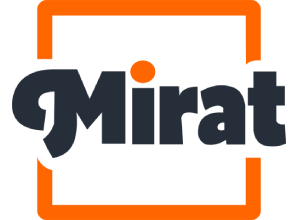When planning an upgrade to your IT risk management solutions, such as introducing a modern server or adding a new wireless communications line, smartphone device, or Web-based service, it is essential to comprehend the risks and repercussions that may arise throughout the project’s implementation.
Here, MIRAT briefs you up on the role of risk assessment in planning a transformation in an IT Service Management ecosystem and how a structured risk assessment process may help you discover, evaluate, and respond to risks associated with any new change.
Why do risk assessments exist?
There is no such thing as risk-free change, especially in IT. Risk is essentially something that introduces uncertainty into a process, increasing the possibility that you may not achieve the desired end. Each time a service is changed or added to a corporate or cloud Data Center, the system introduces the risk.
Risk assessment and management enable you to identify potential hazards involved in new and expanding Network Infrastructure services and plan how the system will respond if a risk like firewalls, intrusion detection, multi-factor authentication, etc. if it arises.
Risk assessment and planning are a part of the ITIL Service Lifecycle’s Service Design phase, where each potential risk can be identified and planned for. Want to sample a sample IT risk management plan? Take the MIRAT 14-day free trial version to try it for your business.
Who are we?
Mirat.ai is an artificial intelligence-driven cloud software capable of providing all the packaged tools under one license, offering centralized self-service capabilities with No/minimum staff and remote monitoring capabilities that presently no other competitor is able to serve. The USP of MIRAT.ai is “Automation” of IT infrastructure management that is highly aligned with ITIL and current trends. The IT infrastructure management includes but is not limited to the operating system, database, network, storage, application, middleware spaces, etc.
IT risk management objectives can be typically addressed in the following ways, and these responses will inform and influence the design of your new service and possibly alter management planning.
• Avoidance – You do not implement any aspect of the service that could result in the occurrence of a particular risk. By declining to execute the requested modification, you avoid the danger.
• Contingency – Once risk manifests, a reaction is begun.
The system monitors for warning signs (triggers) that the risk is occurring and initiates a “Plan B” to address the risk as it occurs.
• Mitigation (Reduction) – Focus areas of IT risk managementwill need you to take proactive steps to lessen the likelihood of a risk occurring. Although the risk has not yet occurred, your risk mitigation strategy makes it less likely to occur.
• Retention – No contingency plan is in place in the case of a potential problem.
You adjust, recognize that the risk and associated losses are possible, and deal with the situation after the fact.
MIRAT explain IT risk management strategies right from initial effect to subsequent response:
When performing risk assessment for a new service, for example, IT risk management for financial services, it is critical to consider the likelihood that the risk will occur (its probability) and the potential for damage if it does (its risk level or impact).
There are numerous methods for calculating the probability and impact of each risk and ranking them. Risks are often ranked from most strong impact probability to high consequences probability, with higher-ranking risks requiring greater attention throughout implementation.
Risk classifications can have a substantial impact on service design, affecting various aspects of your delivery process, including the following:
• If the danger is sufficiently severe, will your organization abandon the project entirely? (avoidance response)
• Which risks necessitate contingency plans (Plan B) if certain risks arise (contingency response)
• Which hazards necessitate a change in service delivery to decrease the likelihood of occurrence (mitigation response)
• Which risks can be disregarded because their likelihood of occurring is insignificant or their impact on the service or equipment being given is negligible (retention response)
To this end, several software packages, such as MIRAT’s risk assessment module, incorporate automated risk assessment questionnaires. Once completed, the Remedy system uses the questionnaires to identify risk levels and generate a Change Risk Report that can assist in determining the appropriate next steps for a change.
Risk assessment is crucial because once you identify the most critical risks associated with each change and their probability and impact, you can select which IT risk management solutions (avoidance, contingency, mitigation, and retention) should be employed to execute the new change successfully.
MIRAT has been proven to reduce 80% of your operational expenses, 20% of outage costs and increase team productivity by 60%, and efficiencies by 30%. You can now get your ROI in just 6 months!
Analyses of data center-related risks and initiatives When it comes to data center changes, the majority of IT changes fall into one of two categories.
• Equipment modifications – servers, devices, firewalls, controllers, wireless devices, UPS, Web filters, phone systems, and power systems.
• External service changes – telephone lines, telecommunications lines, Internet providers, email services, web services, and smartphone apps.
MIRAT notched up precise risk factors connected with Data Center changes within these broad categories of equipment and outside service changes.
Our pricing plans are very cost-effective (starts at $4 per month) and affordable for startups, SMEs, MSMEs, along with enterprise-level plans for larger firms with more extensive requirements.
How to get started with MIRAT
If you want to test how MIRAT handles IT risk management framework , you have 3 options:
• Start a free 14-day trial
• Contact us directly via email marketing@mirat.ai (or) give us a ring at +91-9550827711.
Media Contact
Company Name: MIRAT | NoveI Inductive Reasoning Software Pvt Ltd
Contact Person: Mr. Chaitanya Kumar
Email: Send Email
Phone: 9640300095
Address:Road no 10, 4th Floor, Nirmalam 490 Jubilee Hills
City: Hyderabad
State: Telangana, 500033
Country: India
Website: https://www.mirat.ai/

